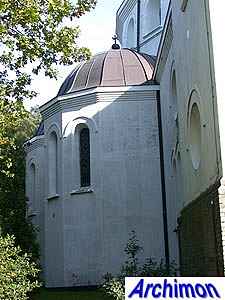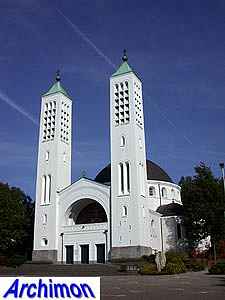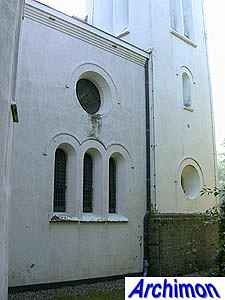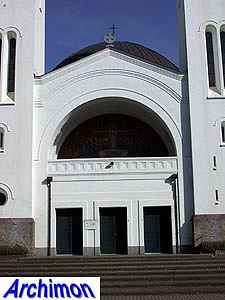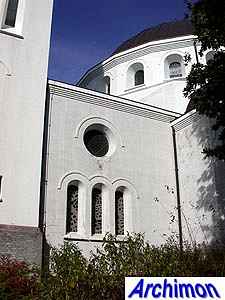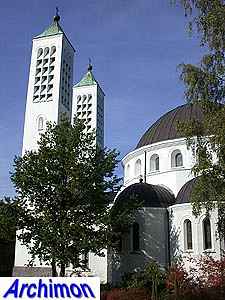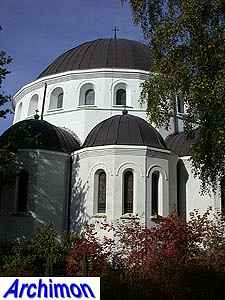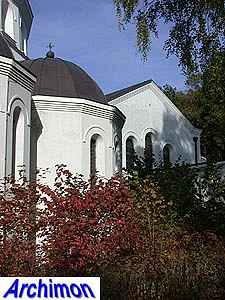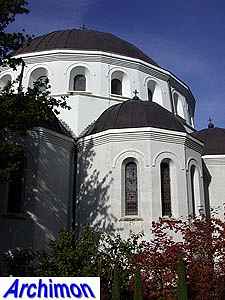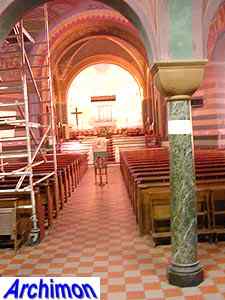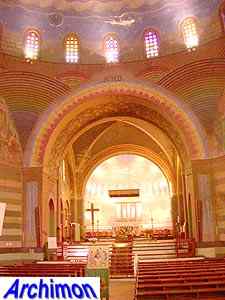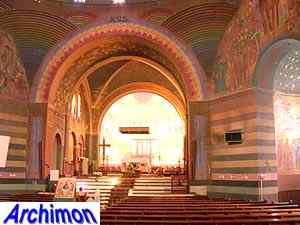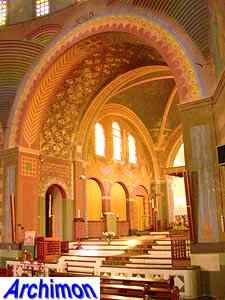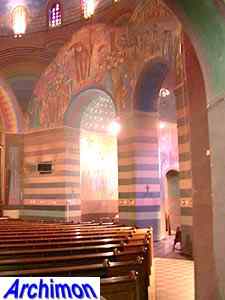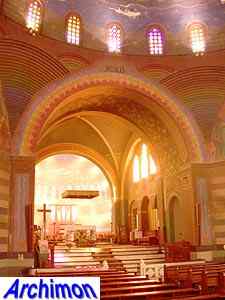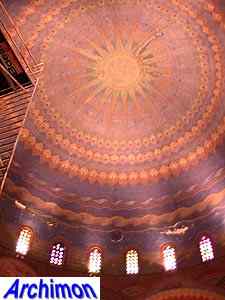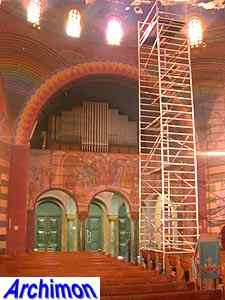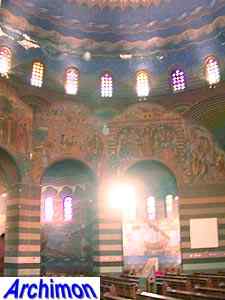 Heilig Landstichting (G): Cenakelkerk (Jan Stuyt & Jos. Margry, 1913-1915) 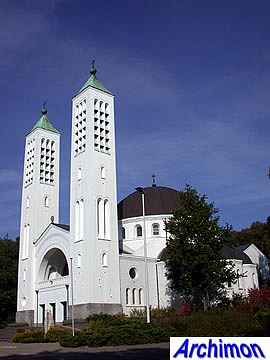 Heilig Landstichting ('Holy Land
Foundation') was founded in 1911 by priest A. Suys after a pilgrimage
to Palestine. The goal of the foundation was to teach about Palestine
and the life of Christ. In the municipality of Groesbeek, just outside
Nijmegen, land was acquired and a small village with a church,
monasteries and a biblical open air museum were built. Suys was
assisted by artist and future curator P. Gerrits, while fellow
participant in the pilgrimage Jan Stuyt designed the church, assisted
by Jos. Margry, the last of the famous Margry
family of architects to specialize in churches. Heilig Landstichting ('Holy Land
Foundation') was founded in 1911 by priest A. Suys after a pilgrimage
to Palestine. The goal of the foundation was to teach about Palestine
and the life of Christ. In the municipality of Groesbeek, just outside
Nijmegen, land was acquired and a small village with a church,
monasteries and a biblical open air museum were built. Suys was
assisted by artist and future curator P. Gerrits, while fellow
participant in the pilgrimage Jan Stuyt designed the church, assisted
by Jos. Margry, the last of the famous Margry
family of architects to specialize in churches.The Cenakelkerk was built as a parish church for the new village and is also known by the name St. Anthonius van Padua. This name may have been chosen for financial reasons. In that time a rich merchant, J.P. Grewen from Rotterdam, was spending much of his money on churches dedicated to this saint, who he much admired. Originally Jos.' father A.A.J. Margry had been commissioned to design the church, like he had done so often when Grewen's money and admiration for Antony of Padua had been involved, but he died in 1911, leaving Jos. in charge of the office. Although young Jos. Margry made two designs for the church, Suys approached Stuyt to be the executive architect, with Margry working as an assistant. The definitive design was accepted in 1913 and the church was completed in 1916. In the design of this church Stuyt used many influences from the Byzantine architecture he had seen in Constantinople and Palestine. It's a white-plastered centralized church, with a dome of reinforced concrete on top, one of the first of that size in the Netherlands. This dome, as well as the sloping roofs, were covered with copper. with Arranged around the central space are chapels. The choir has a semi-circular apse. The walls of the interior are colorfully painted, a sharp contrast to the white exterior. In front of the church is a portal with two towers and a balcony in between. The wall at the back of the balcony is decorated with a mosaic of the Last Supper.
|
|
|
|
|
|
|
|
|
|
|
|
|
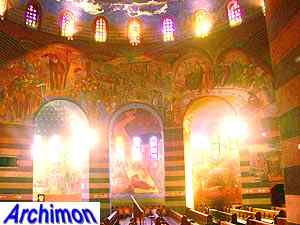 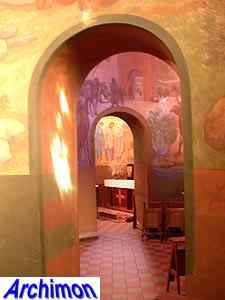 |
|
Back to Berg en Dal municipality Back to J. Stuyt |
